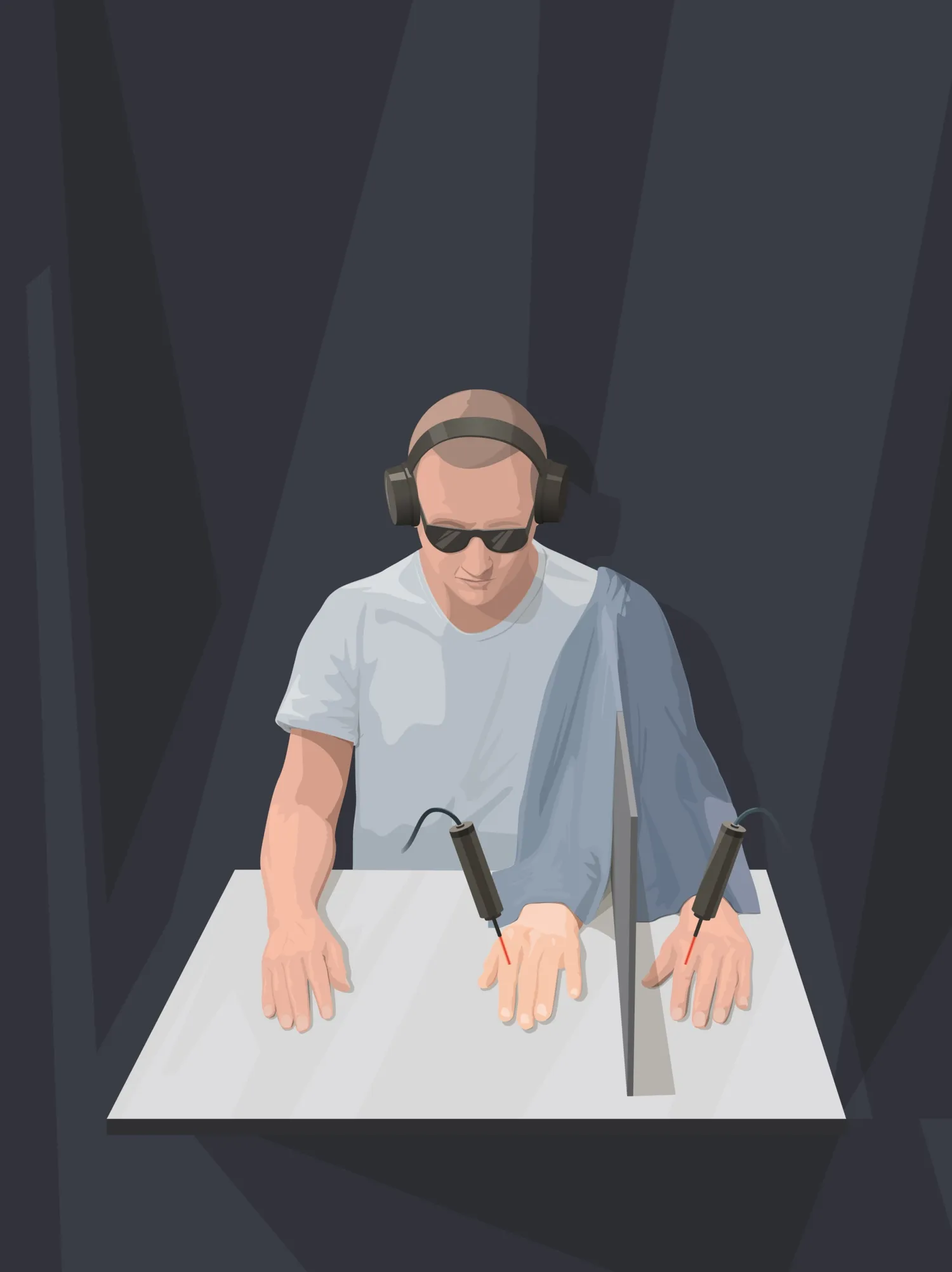Multisensory integration and body ownership: the impact of pain signals

Our body perception relies on how the brain interprets and integrates signals from various sensory systems, including vision, touch, and proprioception – our body’s ability to sense its position and movement in space. In a recent study, researchers at Karolinska Institutet demonstrated that nociception, the sensory process that detects potentially damaging stimuli to the body, also plays a role in shaping our body perception. The article was recently published in the scientific journal PAIN.
A well-known method to study how we feel that our body is ours – the sense of body ownership – is the rubber hand illusion (RHI). During the RHI, individuals experience a rubber hand as part of their own body due to synchronized stroking of both the rubber hand in view and the participant’s hidden real hand.

"Our study shows that a nociceptive rubber hand illusion (N-RHI) can also be induced. This effect is driven by the spatiotemporal congruence of visuonociceptive signals (sensory information that combines visual and nociceptive-related inputs), aligning with the fundamental principles of multisensory integration" says Sara Coppi, PhD student at the Department of Neuroscience and first author of the article.
Nociception plays a role in the sense of body ownership
The findings are significant because they demonstrate that nociceptive signals do more than signal tissue damage or contribute to the emotional experience of pain – they also plays a role in the sense of body ownership.
By combining painful nociceptive signals with other types of sensory information, such as what we see and feel, we can understand how we perceive our body as our own. This approach offers new ways to study how we experience our body through nociceptive painful signals.
How was the study conducted?
The study employed advanced nociceptive input technique (Nd:YAP laser) to stimulate C and Aδ skin receptors.
“We investigated whether the rubber hand illusion (RHI) can be induced by visual and 'pure' nociceptive stimulation –without tactile co-stimulation – and whether it follows the basic perceptual rules of the illusion,” explains Sara Coppi.
In six separate experiments, involving a total of 180 healthy participants, the researchers compared coherent and noncoherent visual and nociceptive laser stimulation on the rubber hand and the real hand. Illusion was measured by both direct (questionnaire) and indirect (proprioceptive drift) behavioural assessments.
The next step
The next step will be to investigate how nociception, vision, and proprioception are integrated at the brain level.
“Through functional magnetic resonance imaging (fMRI), we plan to identify the brain areas involved in integrating these bodily signals, which are essential for perceiving our own body”, says Sara Coppi.
The project was funded by the Horizon 2020 European Research Council, the Swedish Research Council, Hjärnfonden and Karolinska Institutet.
Publication
Eliciting the rubber hand illusion by the activation of nociceptive C and Aδ fibers.
Coppi S, Jensen KB, Ehrsson HH
Pain 2024 Oct;165(10):2240-2256
